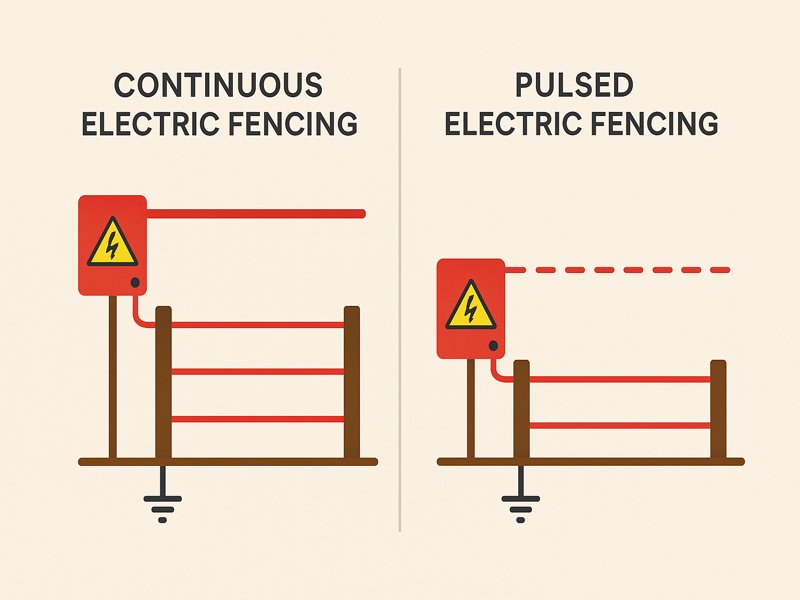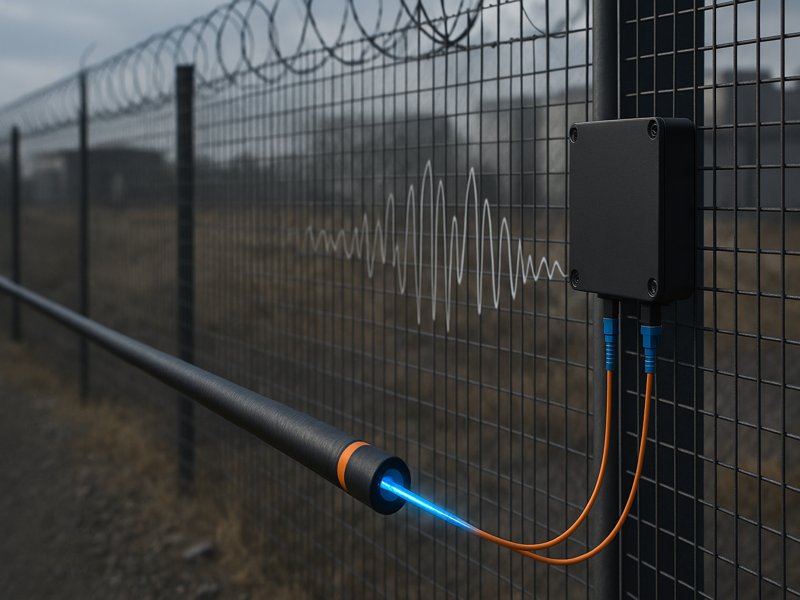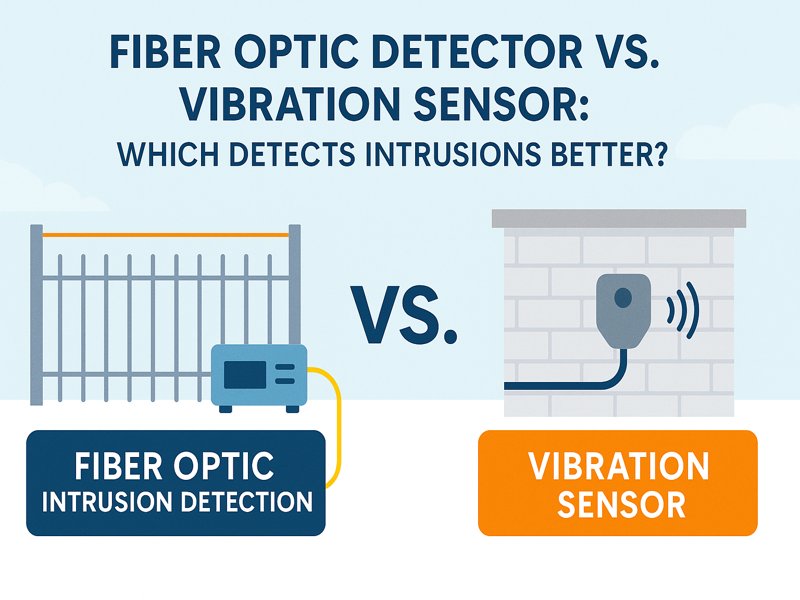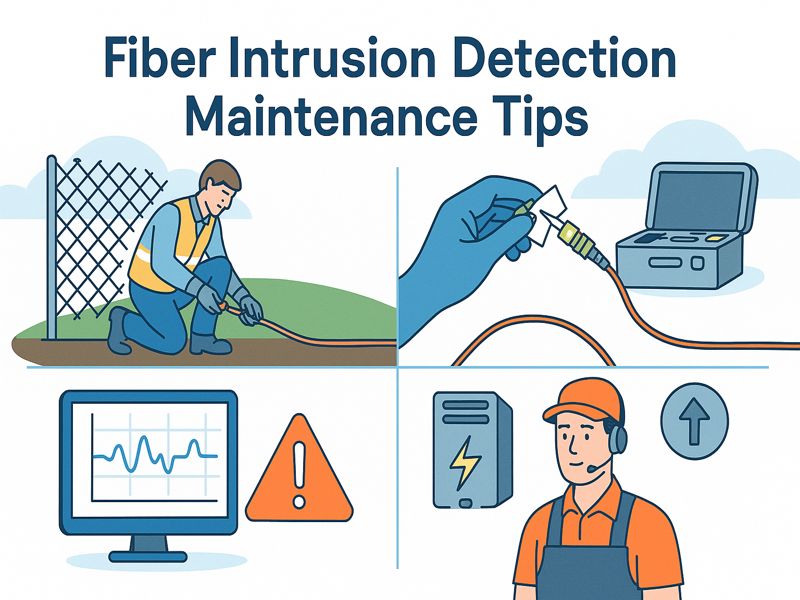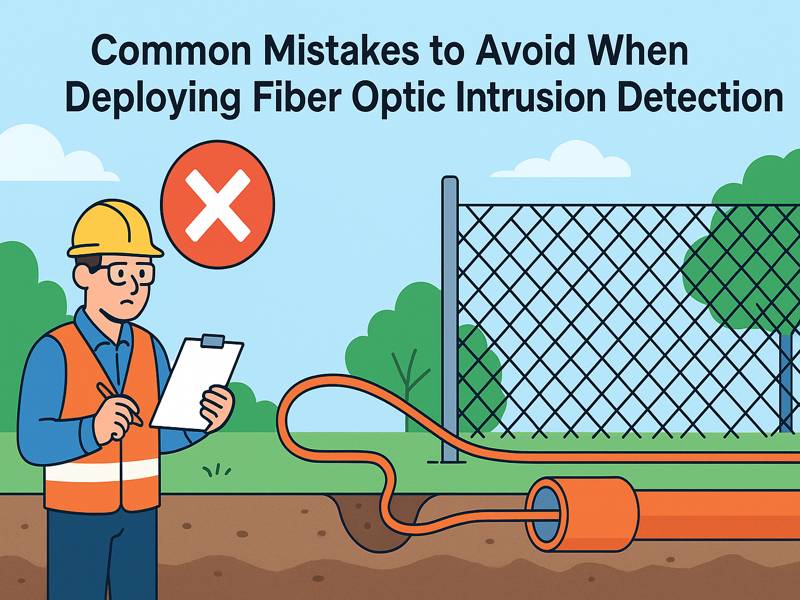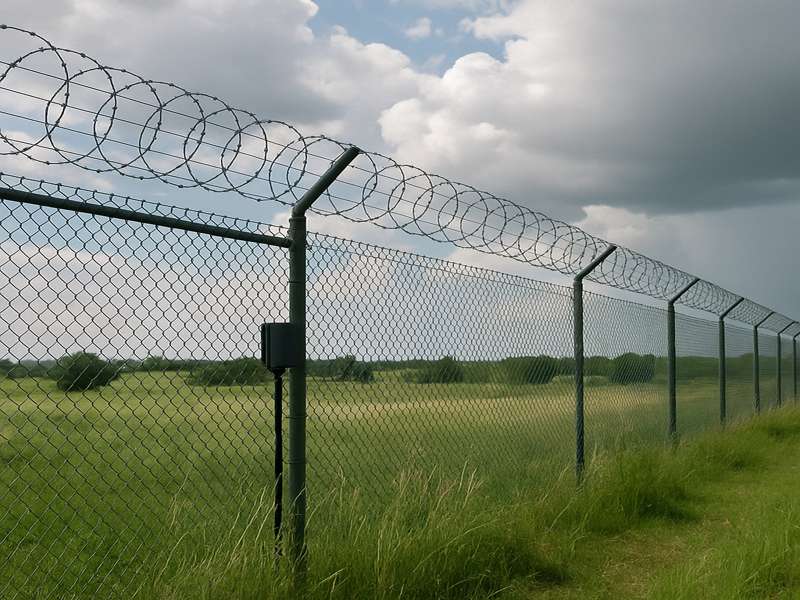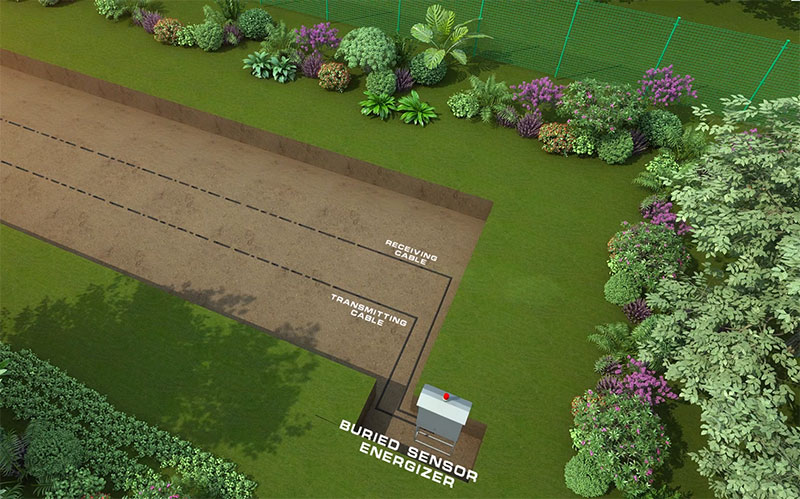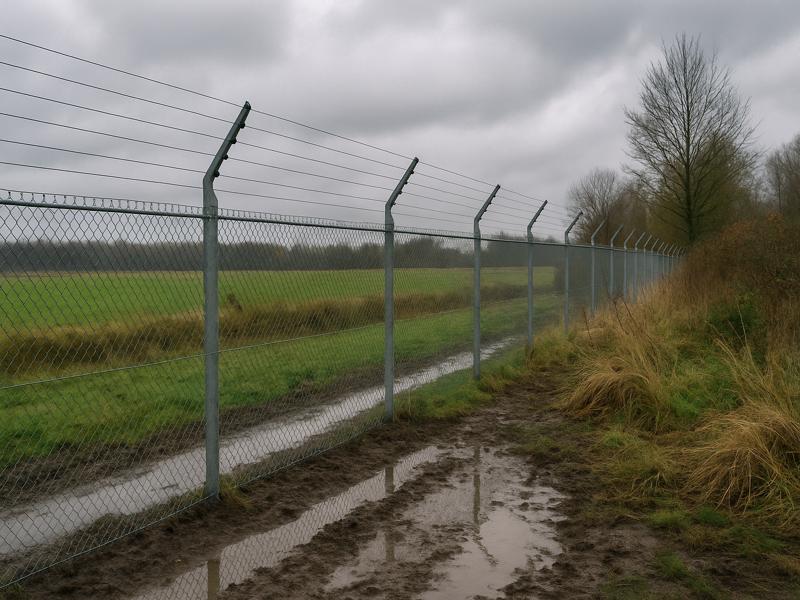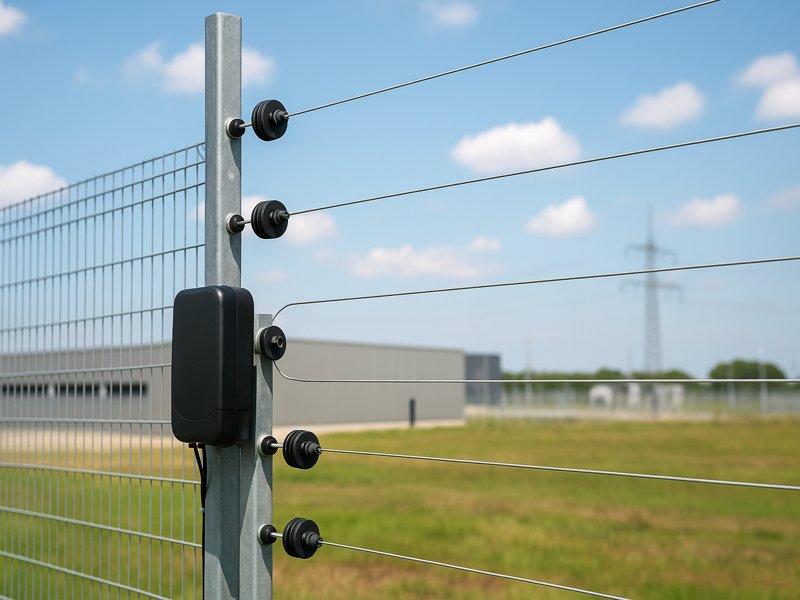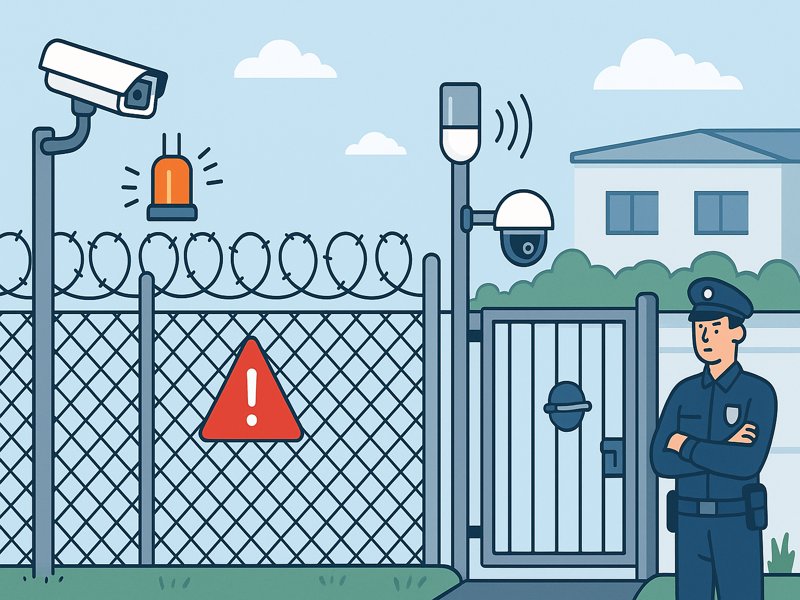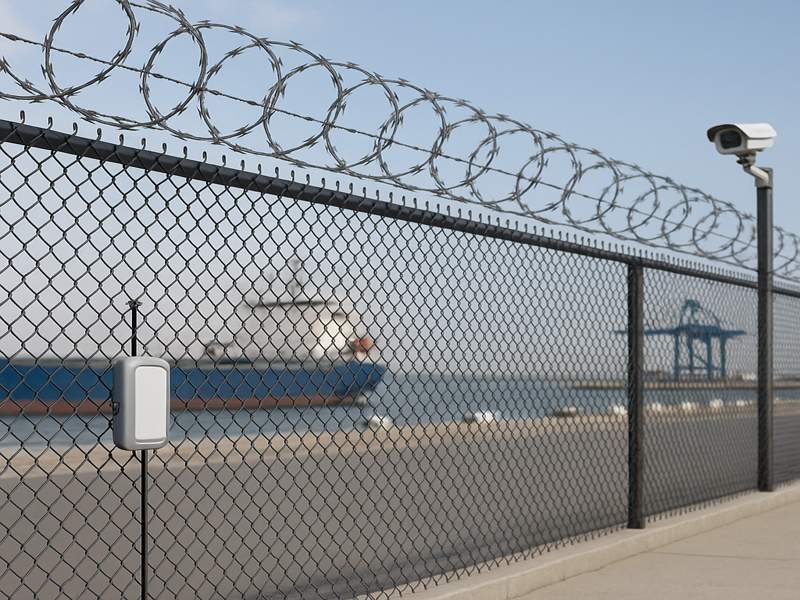Electric fences are key for securing property and controlling access. Pulsed and continuous are the two main types. This article compares both systems, explaining how they work and helping you choose the right one.
An Overview of Systems for Electric Fencing
Any person or animal that comes into contact with an electric fence will receive an electric shock thanks to a power supply and conductive wires. The shock is not typically lethal but is strong enough to deter intrusion or escape.
The two main operating modes are:
- Continuous Electric Fencing: Delivers a non-stop electrical charge through the wires.
- Pulsed Electric Fencing: Delivers electrical pulses at regular, timed intervals (e.g., every second).
- Each system uses a power energizer to convert electrical energy into a high-voltage output, but their delivery methods and safety mechanisms differ significantly.

What Is a Continuous Electric Fence?
A continuous electric fence maintains a constant high-voltage current along the wire at all times. If something touches the fence—even for a split second—it receives a shock immediately.
Key Characteristics:
- Uninterrupted current flow
- Instant response upon contact
- Usually draws higher continuous power
Common Use Cases:
- High-security military zones
- Sensitive government facilities
- Areas requiring an unbroken deterrent presence
Pros:
- Maximum deterrence
- Immediate and relentless response
- Effective against repeated contact attempts
Cons:
- Increased safety risk (prolonged exposure can be dangerous)
- High power consumption
- Not suitable for animals or public-facing fences
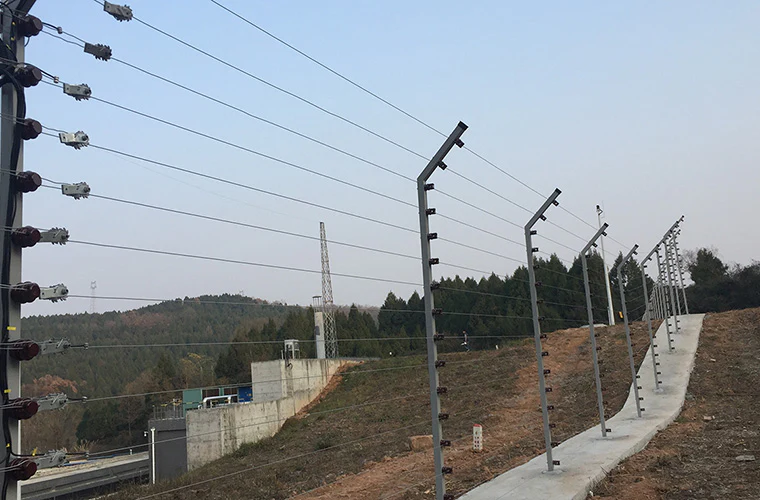
What Is a Pulsed Electric Fence?
A pulsed electric fence, by contrast, sends high-voltage impulses down the fence wire at regular intervals—typically once every 1 to 1.5 seconds. These brief bursts last only a few milliseconds.
Key Characteristics:
- Intermittent electric shock pulses
- Lower average power consumption
- Allows time between pulses for a person or animal to retreat
Common Use Cases:
- Agricultural fencing (livestock containment)
- Residential or commercial property security
- Wildlife exclusion zones
Pros:
- Safer for animals and humans
- Energy-efficient
- An effective deterrent with minimal harm
Cons:
- A delayed reaction window may allow fast-moving intruders
- Less intimidating for determined human intruders
Technical Differences: How They Work
a. Current Flow
| Feature | Continuous Fence | Pulsed Fence |
| Voltage flow | Constant | Timed intervals (pulses) |
| Duration of contact shock | Ongoing until released | Few milliseconds per pulse |
| Energy delivery | Continuous high-voltage | Intermittent high-voltage |
b. Power Supply
Continuous fences require a steady power draw, often needing larger energizers and robust electrical support. Pulsed fences can function effectively using solar-powered or battery-powered energizers, thanks to their low-duty cycle.
c. Safety Mechanisms
Pulsed systems are inherently safer due to the pause between shocks, reducing the likelihood of severe injury. Continuous systems often include cut-off switches, manual overrides, or shock duration limiters for safety compliance
Performance in Security Applications
Continuous Fence in Security:
Used mostly for maximum deterrent applications where risk tolerance is low. Facilities like prisons or nuclear sites benefit from non-stop shock deterrence. However, they must comply with safety codes and legal restrictions in many jurisdictions.
Pulsed Fence in Security:
Used in civilian or semi-restricted areas, such as commercial compounds, warehouse perimeters, and residential estates. The fence alarms on contact and shocks intruders in a timed fashion, allowing time for withdrawal and minimizing injury.
Pulsed fences often integrate intrusion detection systems, such as:
- Zone-based alarms
- Voltage drop indicators
- Tamper detection
Use in Livestock and Agriculture
Pulsed systems are the gold standard for livestock management because they balance effectiveness with safety.
Pulsed Fence for Livestock:
- Prevents cattle, sheep, horses, or goats from pushing through fences
- Safe enough to avoid long-term harm
- Affordable and easy to maintain
Continuous fencing in agriculture is rarely used due to its high risk to animals and impractical energy demand.
Energy Efficiency and Sustainability
A pulsed electric fence typically consumes significantly less energy than a continuous one. Because pulses are sent at intervals rather than continuously, they require less electrical power and can be sustained using renewable sources.
| Category | Continuous Fence | Pulsed Fence |
| Power draw | High (constant) | Low (intermittent) |
| Suitable for solar? | Not usually | Yes |
| Energy efficiency | Low | High |
Installation and Maintenance
Continuous Fence Installation:
- Requires heavy-duty insulators and conductors due to constant current
- Needs a reliable and stable power supply
- More complex grounding system
- May require compliance inspection for safety
Pulsed Fence Installation:
- Easier to install with standard fencing components
- Energizers vary by animal type (horses vs. pigs vs. deer)
- Low-maintenance once installed properly
- Easily integrated with solar panels and smart monitoring systems
Legal and Regulatory Compliance
Many countries have strict regulations governing electric fencing, particularly for continuous systems due to their higher risk profile.
- Europe (EN 60335-2-76 standard): Specifies max energy output and pulse timing for safety
- United States (UL 69, ANSI): Governs fence energizer safety and signage requirements
- Australia/New Zealand: Mandates spacing between pulses and max energy output
In most public and agricultural settings, pulsed systems are the only legally allowed option. Continuous systems may be used only with explicit permissions and enhanced safety features.
Cost Comparison
| Factor | Continuous Fence | Pulsed Fence |
| Initial setup cost | Higher (larger energizers) | Lower (smaller energizers) |
| Energy cost | High ongoing | Low ongoing |
| Maintenance needs | Moderate to high | Low |
| Total cost of ownership | Higher | Lower |
While the upfront price difference may be negligible in small-scale settings, long-term energy costs and safety measures make pulsed fencing more economical in most cases.
Which One Should You Choose?
Choosing between continuous and pulsed electric fencing systems depends entirely on the application, safety concerns, and legal framework in your region.
Choose a Continuous Electric Fence If:
- You need maximum deterrence in high-security zones
- The fence is not accessible to the public or animals
- You can implement strict safety controls and monitoring
- You have access to a reliable power infrastructure
Choose a Pulsed Electric Fence If:
- You’re fencing in livestock or pets
- The fence is near residential or public areas
- You want an energy-efficient and safer system
- Local laws restrict the use of continuous electric fences
Integration with Modern Monitoring Systems
Modern pulsed electric fences are often equipped with smart controls and IoT sensors, enabling features such as:
- Remote monitoring via smartphone or computer
- Real-time alarm notifications
- Battery level and voltage alerts
- Solar charging status
- Integration with CCTV or access control systems
These advanced features are less commonly found in older-style continuous systems, further reinforcing the trend toward pulsed fencing as the modern standard.
Maintenance and Troubleshooting
Both continuous and pulsed systems require:
- Regular voltage testing
- Ground rod inspections
- Checking for wire breaks or corrosion
- Ensuring insulators are intact
- Verifying Energizer output with meters
Pulsed systems may additionally require capacitor and timing circuit checks.
Continuous and pulsed electric fences each have pros and cons. Continuous offers strong deterrence but higher risks; pulsed provides safer, efficient protection—ideal for most residential and commercial needs. Choose based on threat level, environment, laws, and energy use.
